Tuesday, October 4, 2016 – 17:00
We will be undertaking a 19-day field project off O‘ahu starting October 5, 2016, funded through a NOAA Species Recovery Grant to the State of Hawai‘i. This will be our second field effort off O‘ahu this year (see info from our January effort here) and our sixth field project off the island since we first worked off O‘ahu in 2002. We have a number of goals for our field work, but the primary one is to learn more about false killer whales, through the deployment of LIMPET satellite tags, photo-identification, and collection of biopsy samples for genetics, hormone chemistry and toxicology. We also have funding for tags from a private foundation as well as from Dolphin Quest, and hope to deploy tags on one or more of short-finned pilot whales, bottlenose dolphins, rough-toothed dolphins, or other species we encounter. As usual, we’ll be working with all species of odontocetes we encounter, trying to obtain photos for photo-identification catalogs, and we may also collect biopsy samples for studies of genetics, toxicology, and hormone chemistry of other species.
The research crew for this project will include Daniel Webster, Annie Gorgone, Kim Wood and Robin Baird, all from Cascadia, Shannon Harrison, and a number of volunteers.
If you want some background information on our work in Hawai‘i we published a paper on our first 13 years of surveys and a pdf is available here
If you are interested in what we saw during our 2010 O‘ahu project check out our web blog for that effort
End of project update
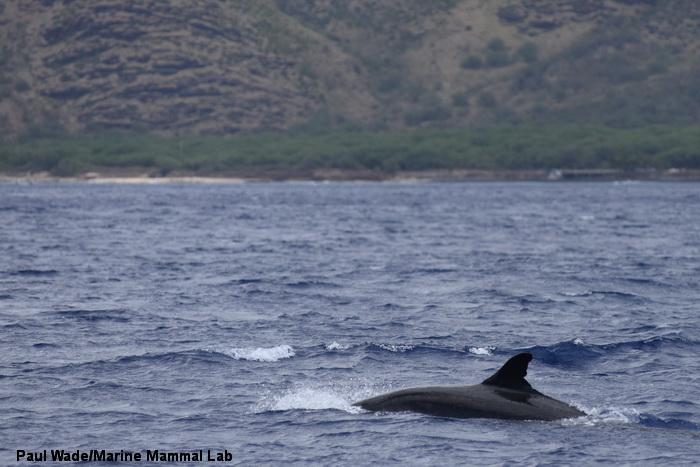
Over the last 19 days we’ve covered 1,741 km off the west side of O‘ahu. During that time we had 49 sightings of 9 species of whales and dolphins, including 14 groups of rough-toothed dolphins, 9 groups of pantropical spotted dolphins, 8 groups of pilot whales, 7 groups of false killer whales, 3 sightings each of spinner dolphins and pygmy killer whales, two sightings each of bottlenose dolphins and melon-headed whales (actually just one lone individual traveling with pilot whales), and one sighting of Blainville’s beaked whales. We took 42,839 photos for individual identification, collected 17 biopsies for genetics, pollutants, and hormone chemistry, deployed 7 satellite tags to track movements (on four different species), and collected 1 squid. Besides our field crew, we also took out 40 different individuals to help on the water, and also received significant help and cooperation from the Wai‘anae dolphin watching community. Thank you to you all! All-in-all a very successful field project! Scroll down below to see more photos and video from the project. Our next field project in Hawai‘i will not be until 2017.
October 19th update
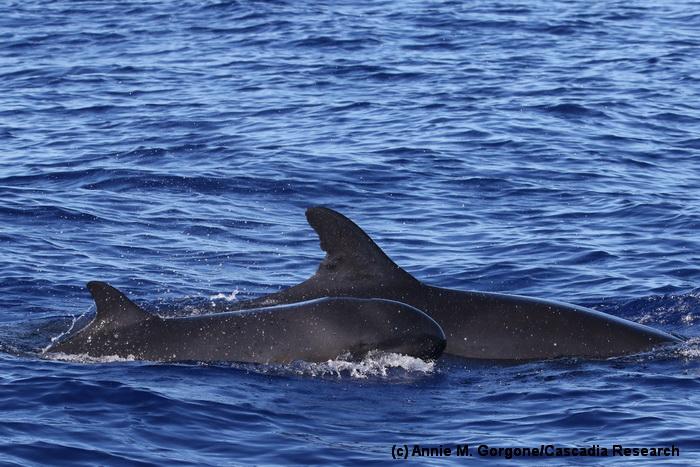
In four days off Wai‘anae we’ve now seen all four species of Hawaiian “blackfish” (pygmy killer whales, melon-headed whales, short-finned pilot whales, and today, false killer whales). The individuals we satellite tagged earlier in the trip made a swing by the coast, and we re-located the group and were able to get identification photos of six or eight individuals we had not seen earlier this trip.
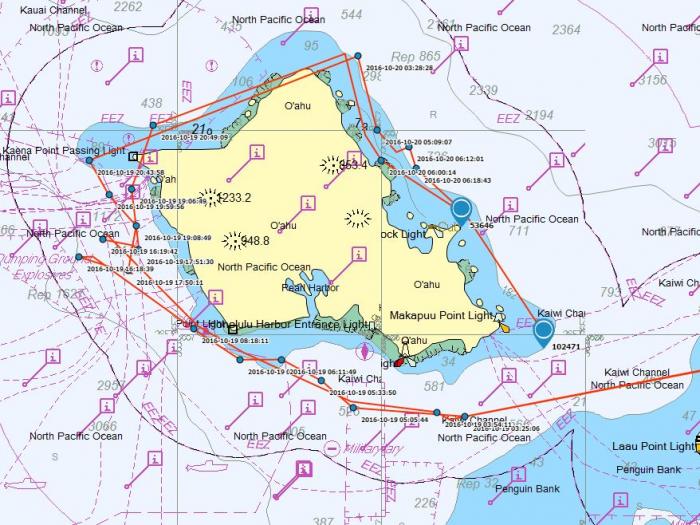
This map, from the ARGOS system, shows the locations of the tagged individuals over a ~30 hour period. The most recent locations, off the east side of O‘ahu, are from late on October 19.
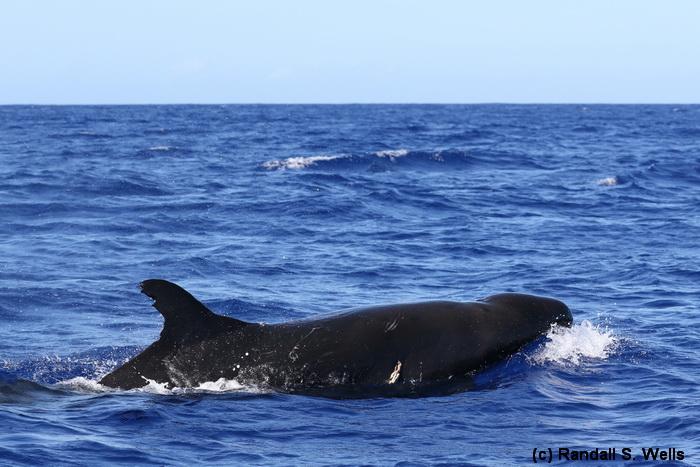
A large adult male false killer whale (Pseudorca crassidens), HIPc129 in our photo-ID catalog, first documented off Maui in 1991 and seen repeatedly off Hawai‘i Island since, but this is the first record we have of this individual off O‘ahu.
October 18th update
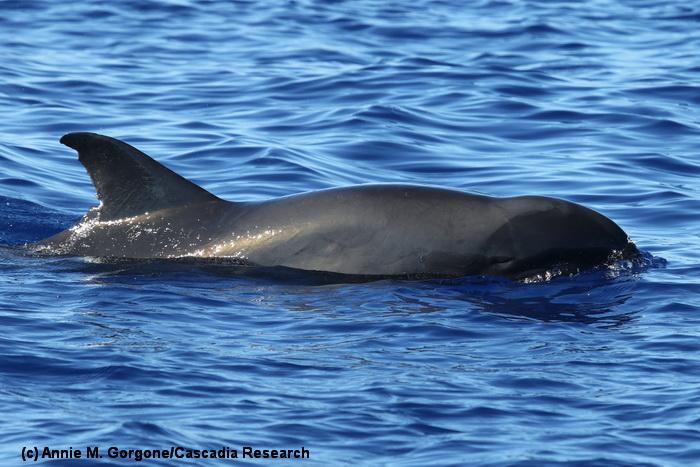
Over the last four days we’ve encountered seven species of toothed whales and dolphins off Wai‘anae, including two new species for the trip. The most unusual sighting was of this individual, a lone melon-headed whale that was traveling with a group of short-finned pilot whales. Melon-headed whales are a very gregarious species, and our average group size is about 250 individuals. We’ve seen them with pilot whales before, but always large groups associated with the pilot whales. Over the time we followed the group the melon-headed whale stayed closely associated with the pilot whales. If you want more information on melon-headed whales in Hawai‘i check out our web page for that species.
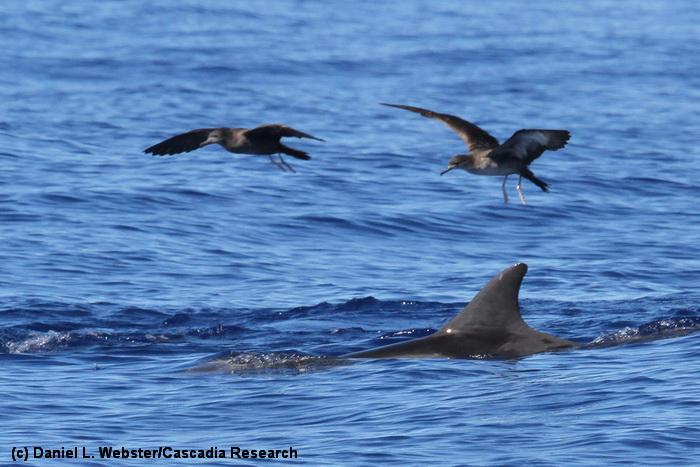
We also saw a number of groups of rough-toothed dolphins (Steno bredanensis), and witnessed quite a bit of foraging. Here two Wedge-tailed Shearwaters are following a rough-toothed dolphin hoping to pick up scraps.
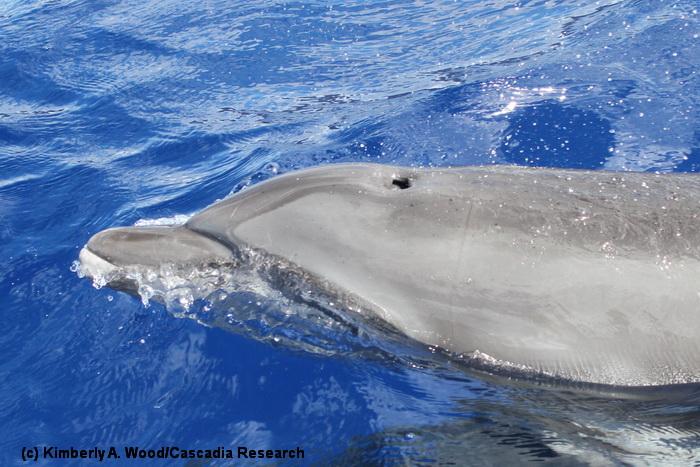
On October 17th we saw our first group of bottlenose dolphins this trip, a group of six individuals. There is a resident population off O‘ahu, and we obtained identification photos of all the individuals present to compare to our catalog, as well as deployed one LIMPET satellite tag to study their movements.
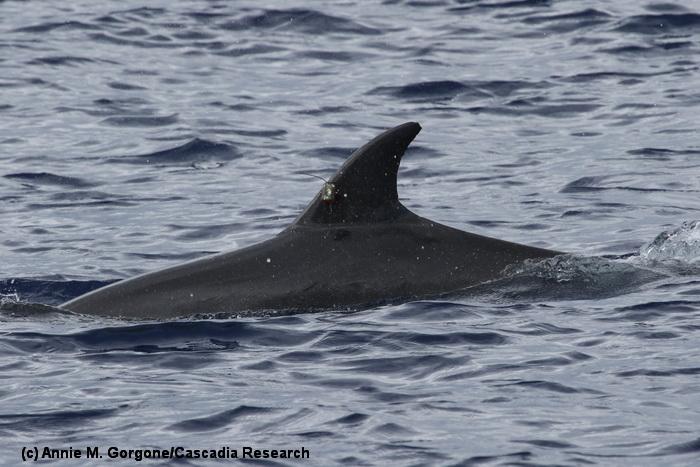
The individual we tagged, HITt0604 in our catalog, had been documented once before off O‘ahu, exactly seven years earlier to the day, October 17, 2009! This photo shows the LIMPET tag on the dorsal fin. We are hoping to track this individual over the next few weeks to determine what areas around O‘ahu are most regularly used.
October 14th update
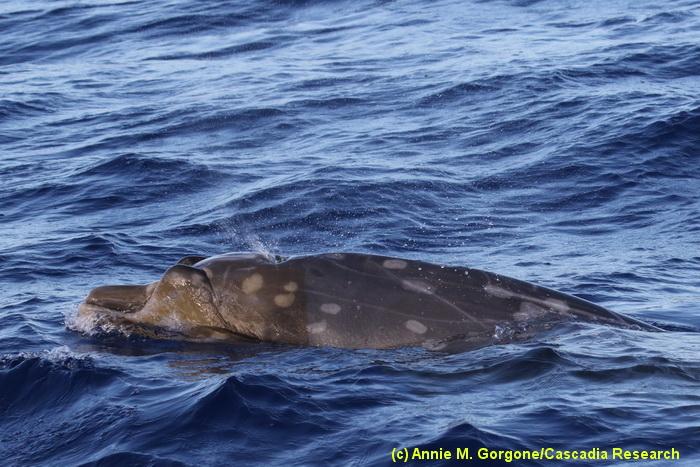
Over the last few days we’ve seen rough-toothed dolphins, pantropical spotted dolphins, spinner dolphins, short-finned pilot whales, and three Blainville’s beaked whales! The Blainville’s beaked whale sighting is the most unusual – we rarely see this species off O‘ahu, and we were able to get good ID photos of two of the three individuals. This photo, of a male Blainville’s beaked whale, shows the highly arched jaws. What is strange about this photo is that the teeth (they have two teeth in the lower jaws) have not yet erupted, although this individual was definitely the size of an adult male. The white oval scars are from cookie-cutter shark bites, while the linear scars are from interacting with other males.
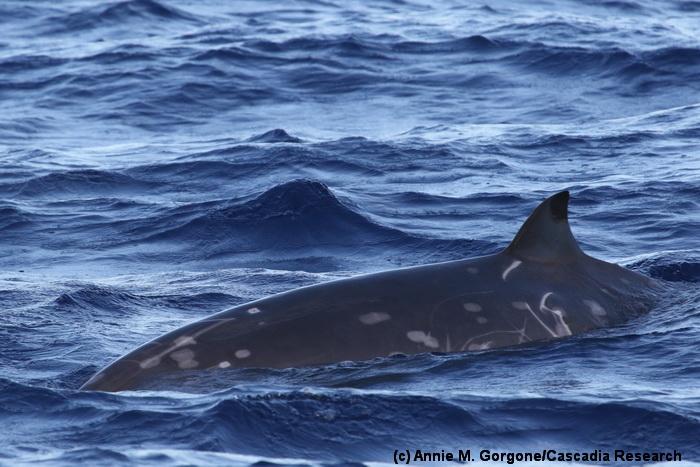
There is a resident population of Blainville’s beaked whale off the island of Hawai‘i, but based on our photo-identification work (frequent re-sightings off Hawai‘i Island, no re-sightings off O‘ahu or Kaua‘i) the Blainville’s beaked whales off this island are not resident to the area.
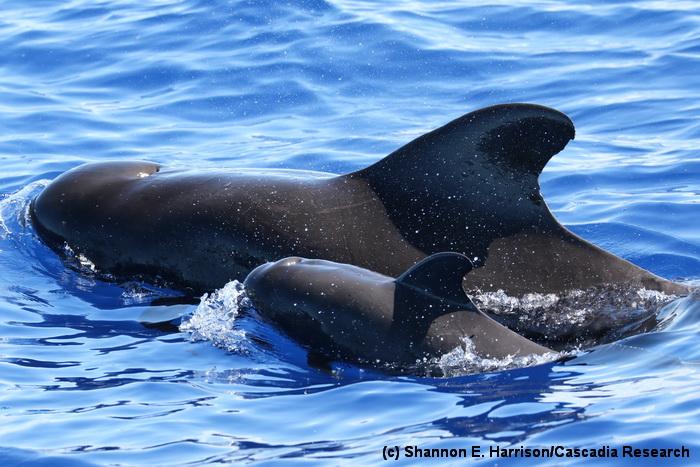
On October 12th we encountered a large (~60-70) group of pilot whales, and were able to deploy one satellite tag to track movements and collected two biopsy samples for genetics. This calf is probably a couple of months old, and appears to be quite robust.
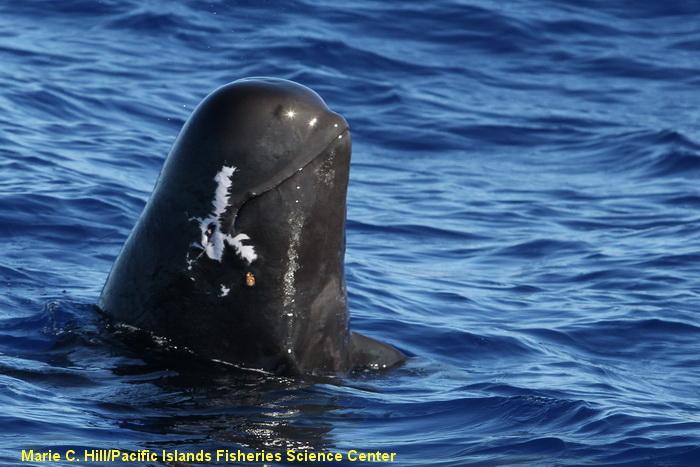
This short-finned pilot whale has a very unusual scar on the side of the head around the eye – what could have caused it is unclear. The small orange spot (to the lower right of the white scar) appears to be a cluster of cyamids (“whale lice”).
October 10th update
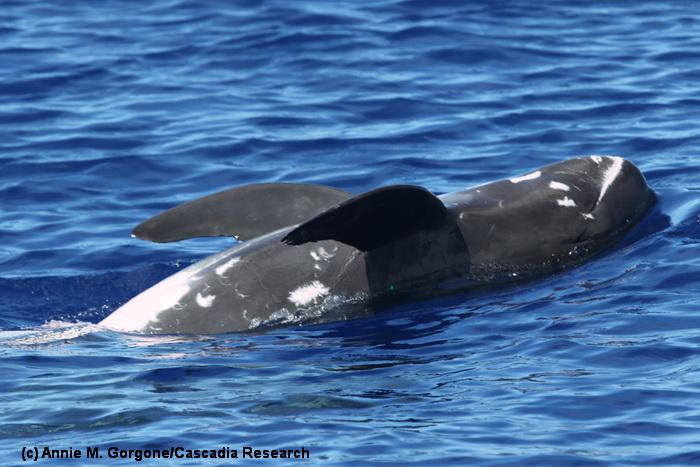
While we did find false killer whales again today (the 4th day in a row!), possibly the more unusual sighting was of a group of pygmy killer whales, a closely-related species. Of the 11 species of resident whales and dolphins in Hawai‘i, pygmy killers are the one we see least often. From long-term photo-identification efforts, we know there is one social group resident to O‘ahu and the Penguin Bank area, and that is the group we found today.
Video footage from our pygmy killer whale encounter.
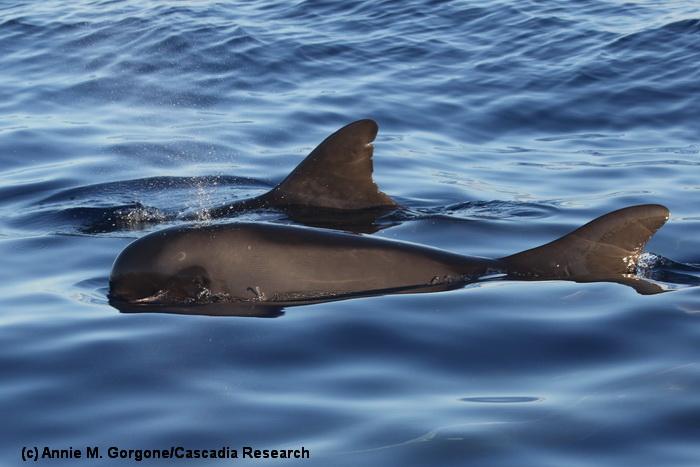
Pygmy killer whales are one of the least-known oceanic dolphins, but more is known of the population in Hawai‘i than anywhere else in the world. They have long-term social bonds, and the appears to be two island-associated populations in Hawai‘i, one off O‘ahu and one off Hawai‘i Island. For more infomation check out our web page on this species.
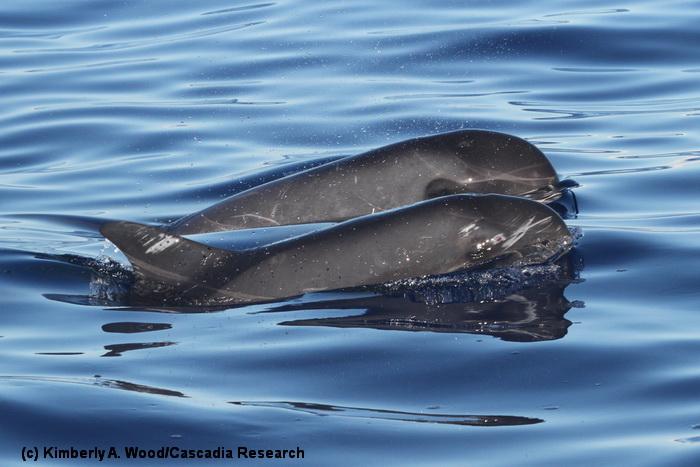
This photo shows two juvenile pygmy killer whales from today, one of which with some unusual scrapes along the body. Pygmy killer whales often have paired linear scars caused by interacting with others, but these scars appear more likely to be caused by rubbing against some surface.
October 9th update
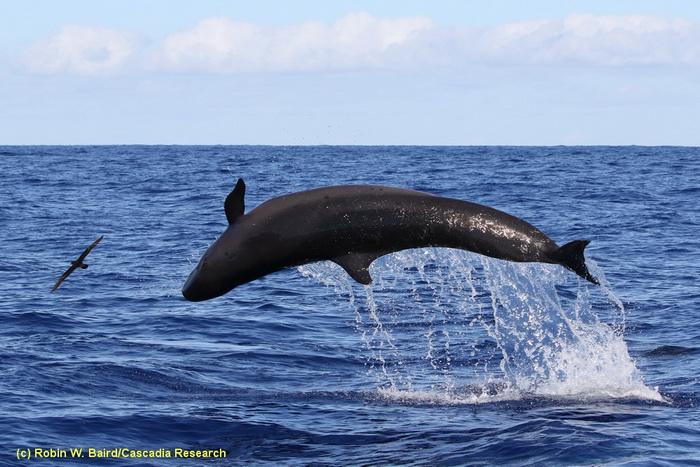
For the third day in a row we encountered false killer whales off O‘ahu! This individual was leaping while attacking a large (~40-5- lb) mahimahi. It was a small sub-group, only about six individuals, but we were able to get identification photos of all as well as collected two biopsy samples for studies of genetics, toxicology, and hormone chemistry.
Video footage from today’s false killer whale encounter, with the whales pursuing a mahimahi under our boat (note also there is a shark visible circling in the distance).
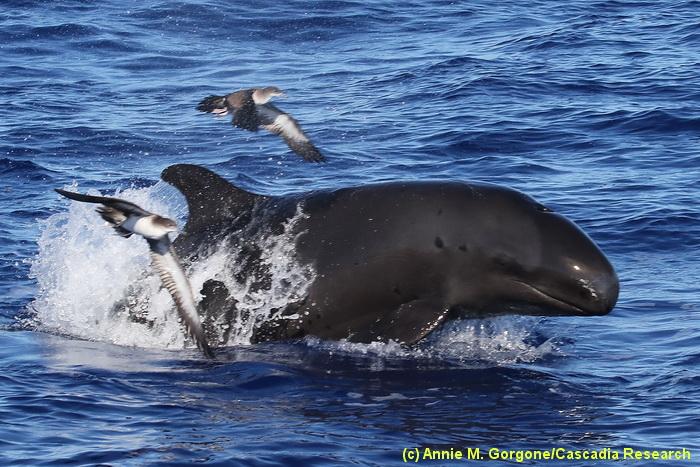
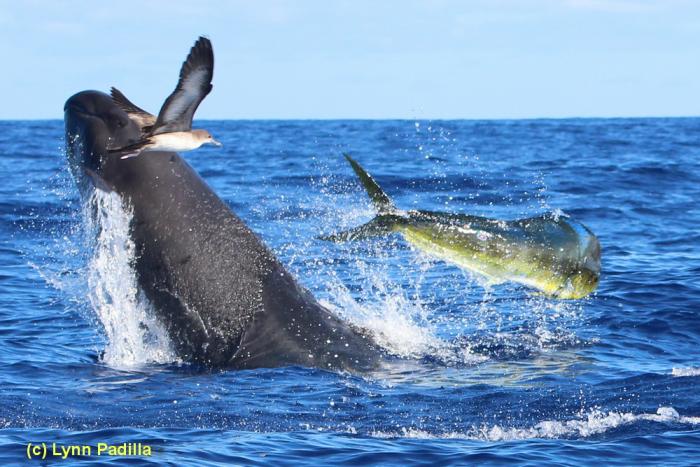
October 8th update
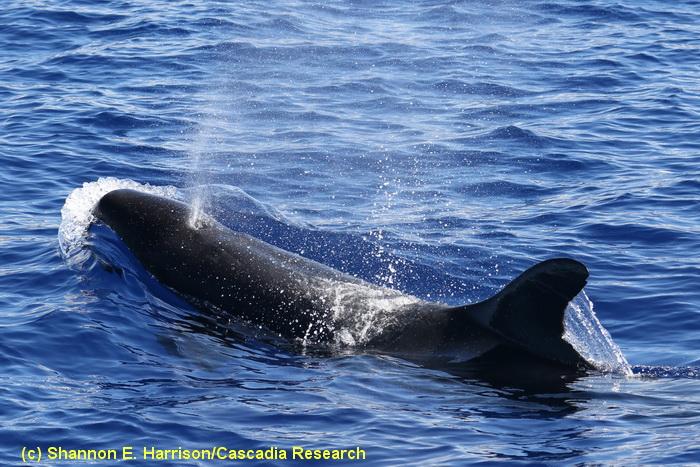
False killer whales off Wai‘anae two days in a row, although today we encountered a group of Cluster 1 individuals, the most frequently encountered social group of false killer whales.
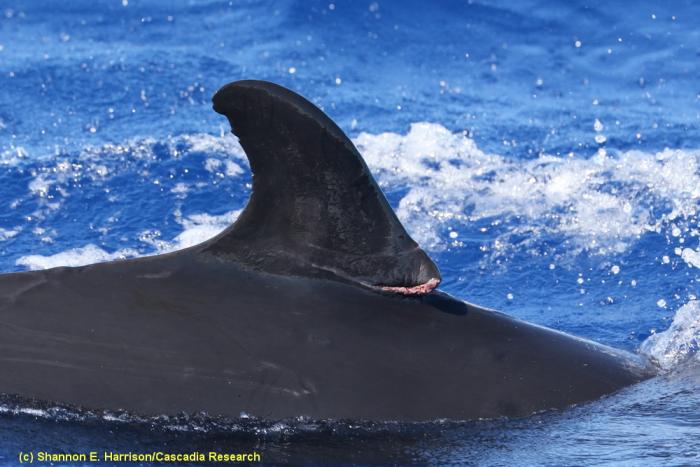
One of the individuals encountered today had a recent line injury on the dorsal fin – these types of injuries occur when a line cuts into the leading edge of the fin, most likely due to hooking and struggling against a fishing line. This individual, HIPc310, is an adult female, first documented off Hawai‘i Island in 2008 and seen 32 times since then, including sightings off Maui, O‘ahu, Kaua‘i and Hawai‘i Island. Her frequent sighting history means we should have a good chance of documenting how the wound heals.
October 7th update
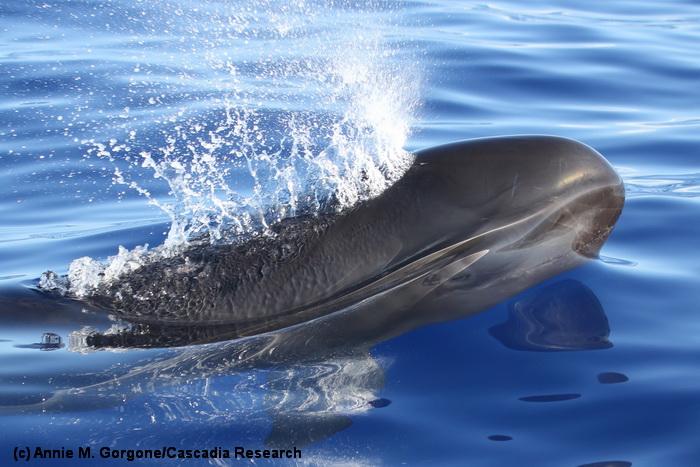
Today we encountered our highest priority species for the trip, false killer whales! These were members of Cluster 3, the same social group as the individual that was found dead at South Point, Hawaii Island, on September 28, 2016. We were able to get good ID photos of the individuals present, but lost the group in rough seas. Hopefully we’ll see them again soon!
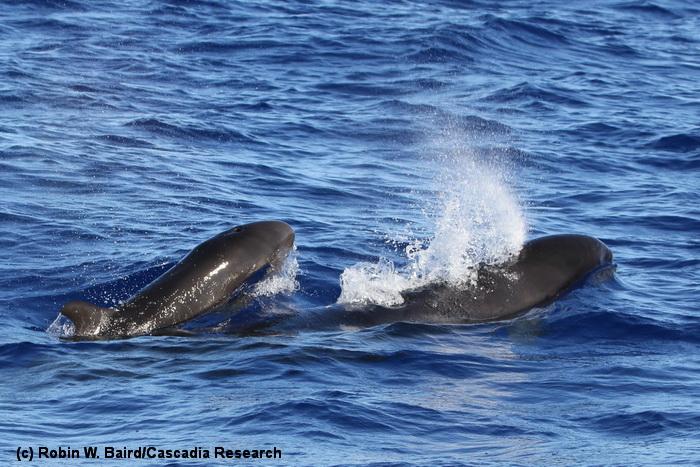
There was one mother/calf pair in the group today – we are awaiting an ID of the mother to see if this is her first calf.
October 6th update
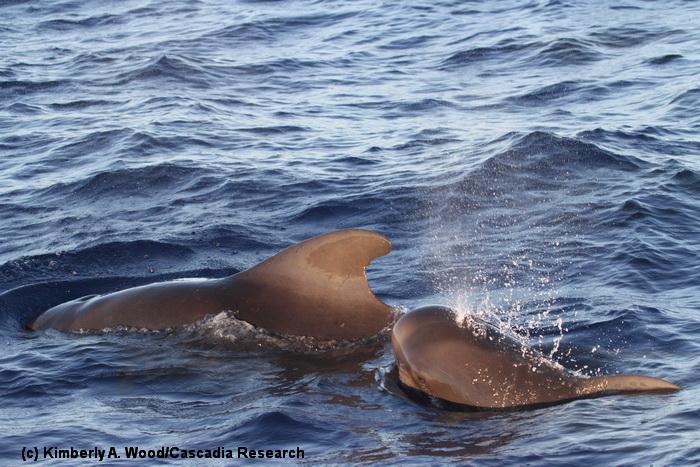
Our second day on the water was quite productive – early in the morning we found two groups of pilot whales traveling south west of Ko Olina, and were able to photo-identify most of the individuals present as well as deploy one satellite tag (to track movements) and collect several biopsy samples (for genetics). Southern Oahu is an area where two communities of pilot whales overlap, a Kaua‘i/western Oahu community and a O‘ahu/Lana‘i community, and we are hoping this group was from the poorly known O‘ahu/Lana‘i community.
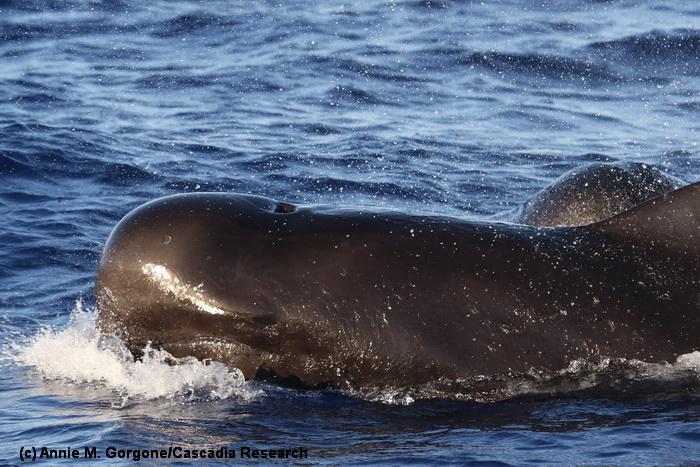
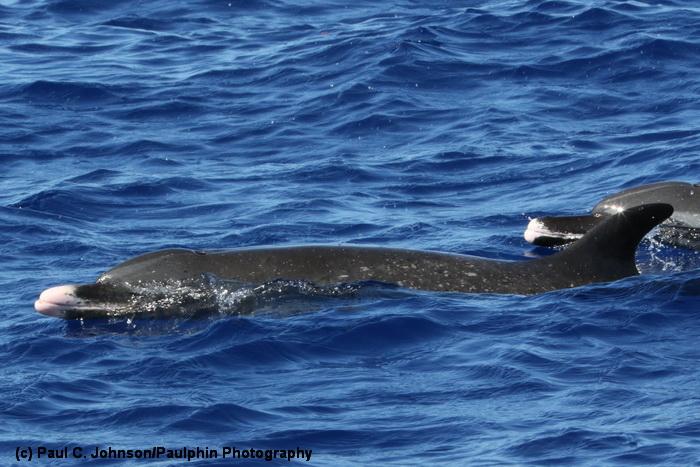
We also encountered a large group of pantropical spotted dolphins, and were able to deploy one satellite tag to track their movements. This is only the fourth time we’ve tagged a spotted dolphin in Hawai‘i – three insular (island-associated) populations of spotted dolphins were recently recognized in Hawaiian waters, including one off O‘ahu, but little is known of their movements.
October 5th update
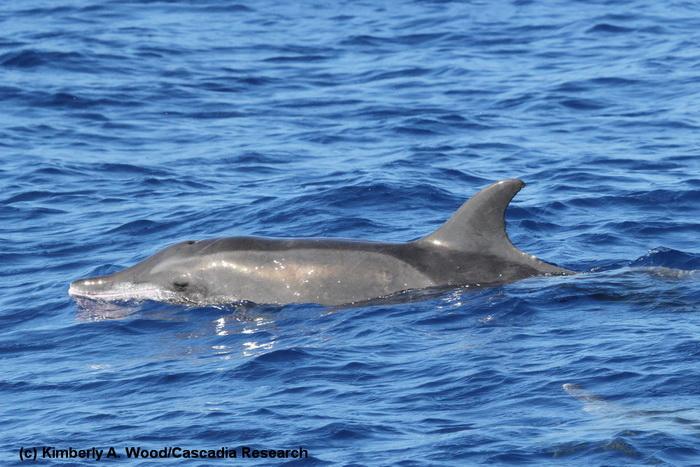
Our first day on the water we covered 120 kilometers off the Wai‘anae coast, most of it in depths of greater than 500 m (and some as far as 24 km offshore). A good start to the trip, with sightings of spinner dolphins, pantropical spotted dolphins, and rough-toothed dolphins. We were able to get IDs of about 15 different rough-toothed dolphins, to help understand movements between O’ahu and Kaua’i. This photo of a rough-toothed dolphin from today shows the gently sloping forehead characteristic of the species.
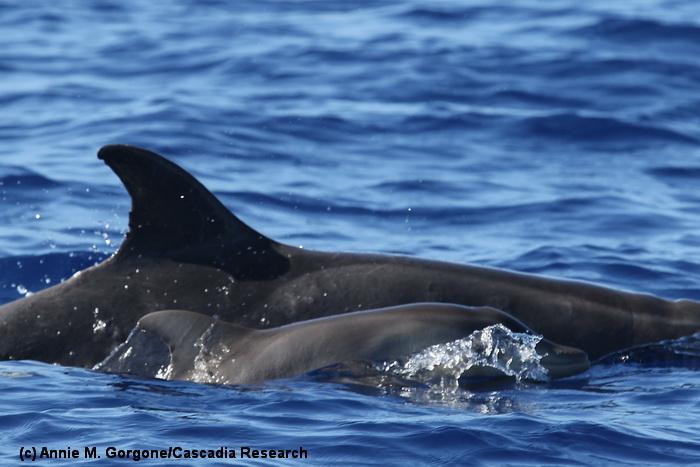
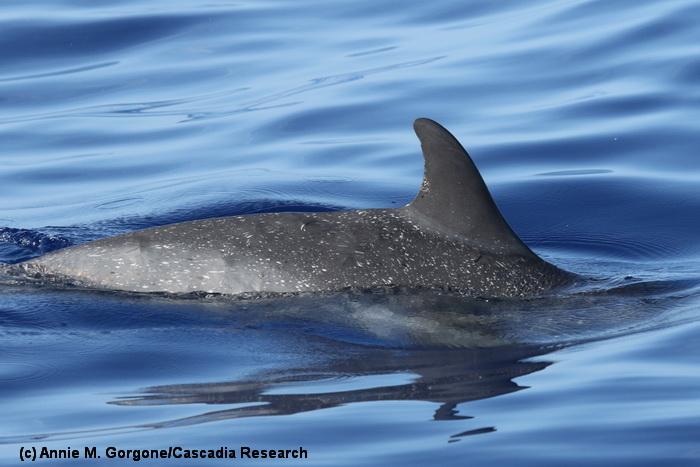
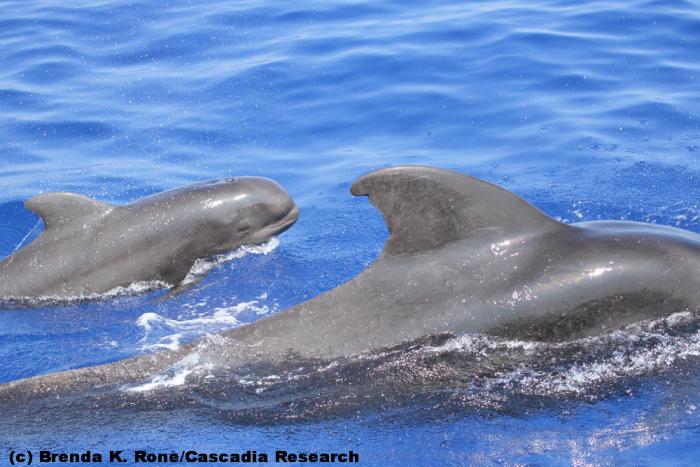
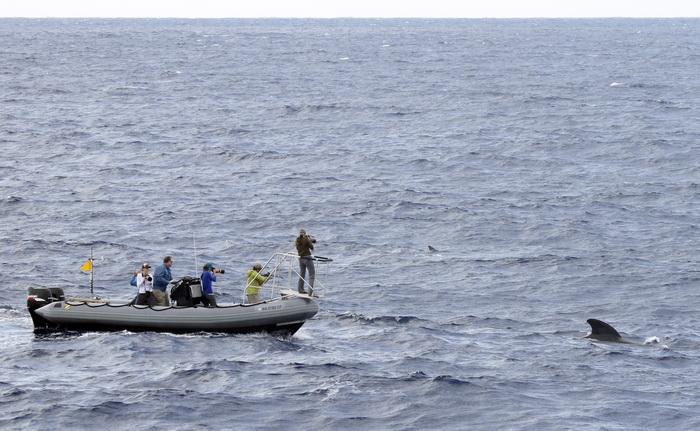
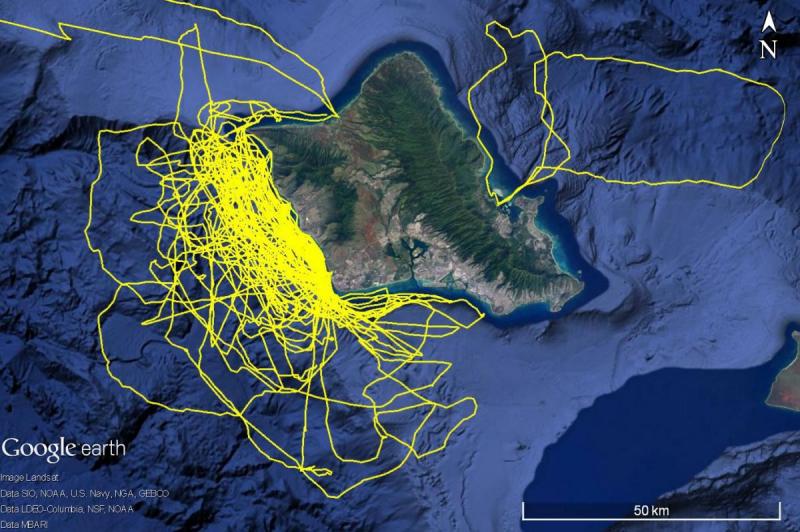
All photos are copyrighted and should not be used without permission (contact Robin Baird at rwbaird (at) cascadiaresearch.org for permission).
Species:
- Blainville’s beaked whale (Mesoplodon densirostris)
- False killer whale (Pseudorca crassidens)
- Melon-headed whale (Peponocephala electra)
- Pantropical spotted dolphin (Stenella attenuata)
- pygmy killer whale (Feresa attenuata)
- Rough-toothed dolphin (Steno bredanensis)
- Short-finned pilot whale (Globicephala macrorhynchus)
- Spinner dolphin (Stenella longirostris)
Like us on Facebook page if you want to receive notices of when information is posted and updates on other Cascadia projects.